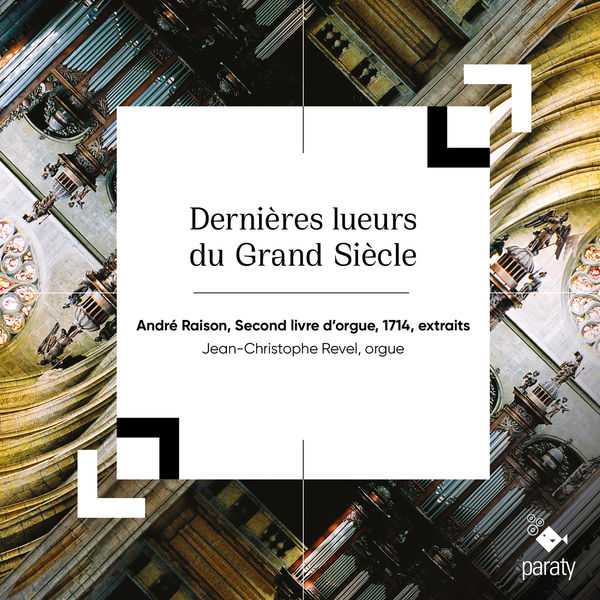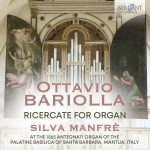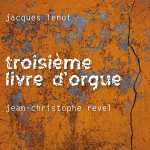

Composer: André Raison
Performer: Jean-Christophe Revel
Format: FLAC (tracks)
Label: Paraty
Catalogue: PTY6221119
Release: 2022
Size: 1.35 GB
Recovery: +3%
Scan: yes
Second livre d’orgue
01. La paix tant désirée «Da Pacem Domine»
02. Fugue sur «Da Pacem Domine»
03. Prélude en bécarre
04. Fugue 2
05. Fugue 3
06. Ouverture du 7e ton en d la re
07. Allemande grave en g re sol
Timbres de Noëls
08. À la venue de Noël (Timbre chanté)
Second livre d’orgue
09. Voicy le jour solemnel
10. Joseph est bien marié
Timbres de Noëls
11. Or nous dites Marie (Timbre chanté)
Second livre d’orgue
12. Une jeune Pucelle (Timbre chanté)
13. Noël Poitevin avec tambourin improvisé (Timbre chanté)
14. Où s’en vont ces gais bergers
15. Laissez paître nos bêtes
16. Duo sur « Vous qui désirez sans fin » à la manière des cornes de chasse
17. Ô Créateur
18. Tous les Bourgeois de Châtres
19. Élévation sur «Puer nobis nascitur» (Timbre chanté)
20. Quoy ma voisine !
21. Vous qui désirez sans fin
22. Noël cette journée, rondeau
André Raison’s (1650 circa, 1719) biographical facts are so scattered, and they teach us so few about him, that he remains for us a quite poorly known musician: a hypothetical date of birth, a rather imprecise date of death, 1719, and a few pieces of information related to his education as well as his main positions – organist to the grand couvent et collège des Jacobins of rue Saint Jacques, and subsequently, to the “Royal” abbey of Sainte Geneviève du Mont where he had previously studied. We also know that Louis-Nicolas Clérambault, who dedicated to him his first and only organ works book in 1714 (date of publication as well of Raison’s Second Book), was his student.
From Raison’s hand only remain two impressive organ books, as much in the density as in the quality of their writing. His First Book, published in 1688, comprises five masses which can also be parted in Magnificat and Thanksgiving for the happy recovery of the King (cinq messes qui peuvent être également répartis en Magnificat ainsi qu’une Offerte en action de grâce pour l’heureuse convalescence du Roi) with an essential introduction for the interpretation of the repertoire of this period.
His Second Book, published in 1714, is less famous today, but is, nevertheless, an extremely well accomplished work in his form, and totally original in its musical and spiritual substance.



